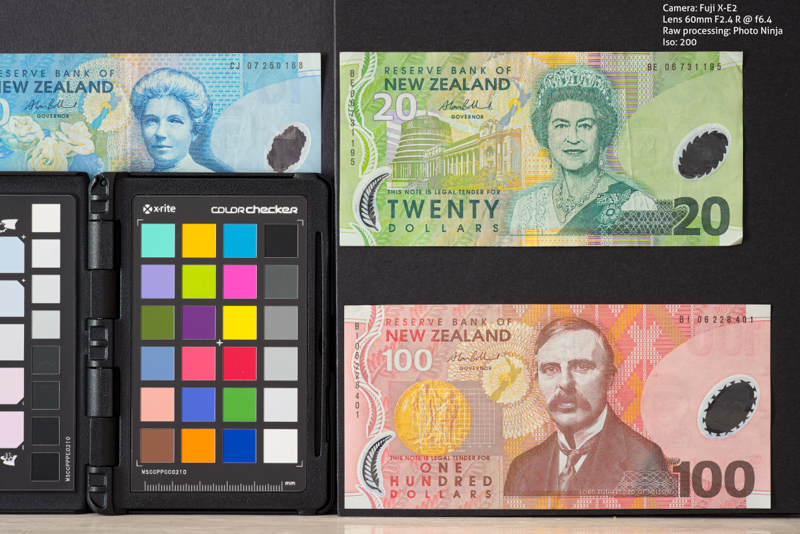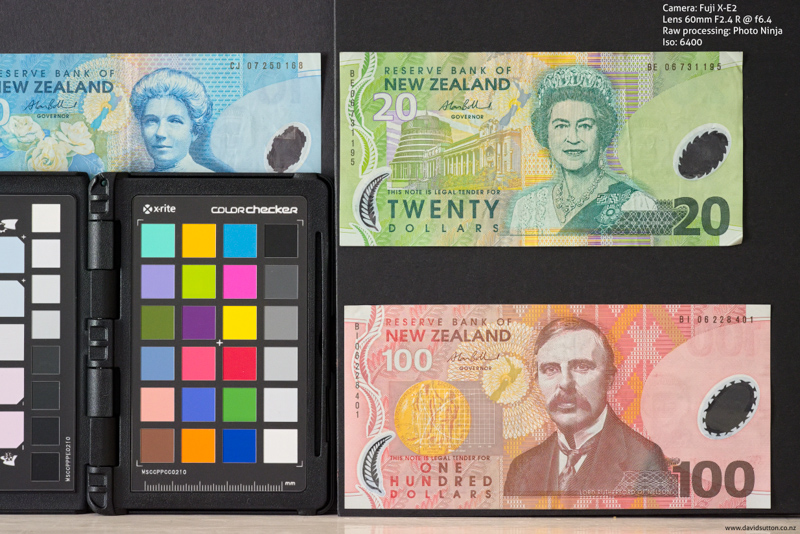I recently made 17×25 inch (43×63.5 cm) prints to look at the high ISO performance of my Fujifilm X-E2.
I loathe pixel-peeping on screeen. To judge a camera’s sensor I want to see photos on a wall.
Images of banknotes are handy for test prints because I can look at detail plus the performance of the red, green and blue channels.
Here’s the layout at base ISO of 200 using available light:

Let’s skip the ISO 3200: they look as good as the base ISO.
Here we are at ISO 6400 processed using my favourite raw converter for Fuji files – Photo Ninja.

Due to jpeg compression, you won’t see any difference on screen between the two. And since there is almost no difference visible in print, you still wouldn’t see a difference even if I uploaded high resolution files.
In fact, I am only able only spot the difference between the images by looking at the detail in the watermarks for the green and red banknotes.
Here’s an enlargement of the green banknote. Right click the image in your browser and select “view image” to see the detail. Sorry Mac users, I only know how to do this in Windows.

Here’s the red:

The loss of detail is really very small, and for printing on 17 inch wide roll paper I wouldn’t hesitate to use ISO 6400.
My Canon 5DII was no slouch. It was good at ISO 3200 if you were very careful to nail the exposure. The X-E2 is simply way ahead. Bear in mind too, that this subject matter is a bit of a torture test because it covers a full tonal range. There is no opportunity to expose to the right to cover up noise or detail loss in the shadows. Here’s the histogram of the raw file.

Amazing times we live in to have cameras like this.
If you would like to see the prints, call into Photo and Video in Christchurch. There’s also an ISO 3200 version there.